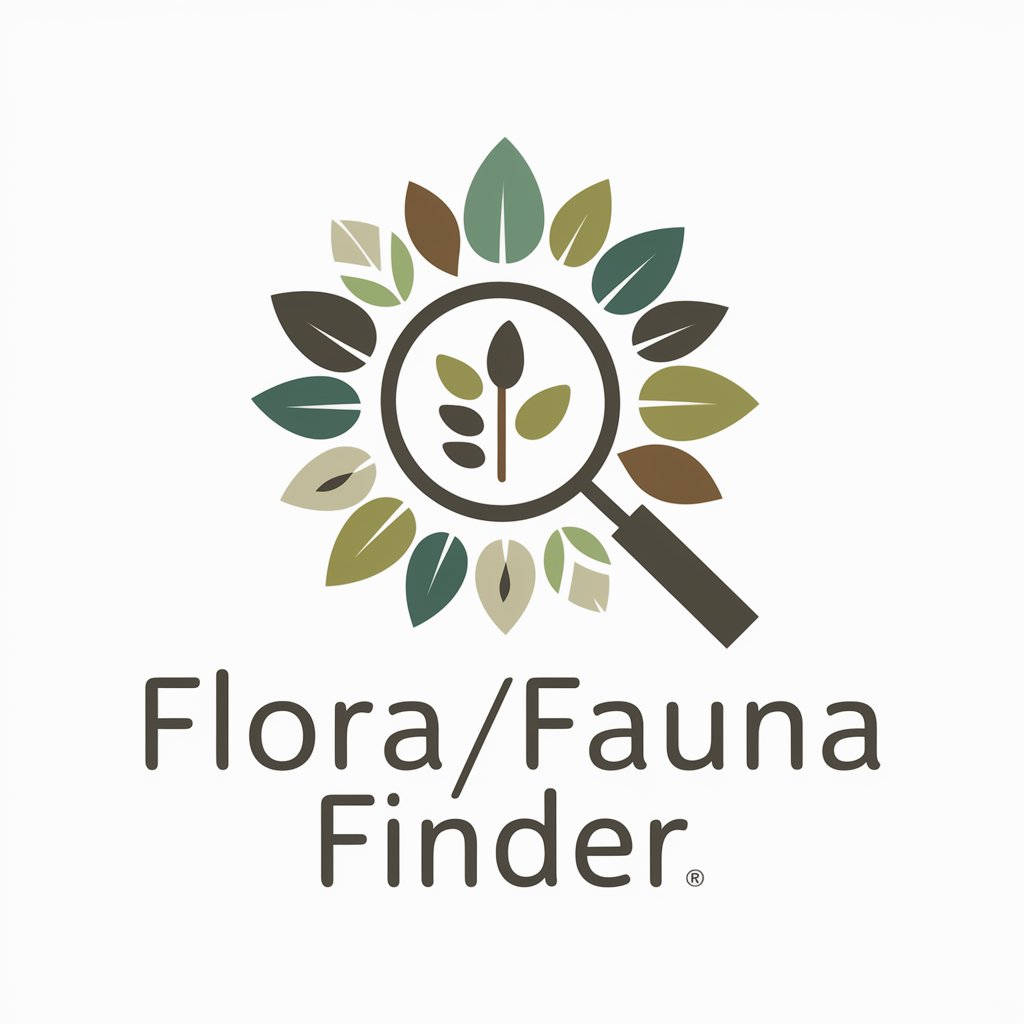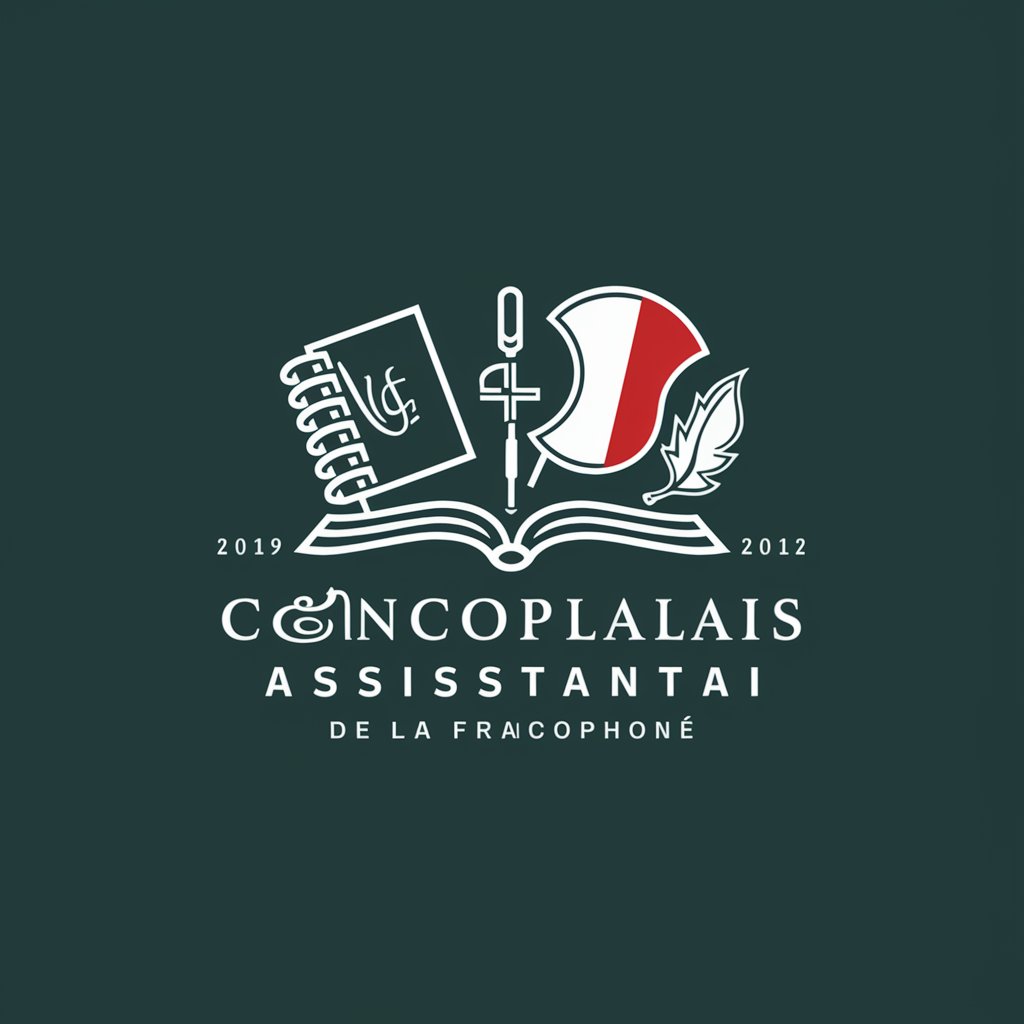Flora/Fauna Finder: Animal & Plant Identification - Animal & Plant ID with AI

Welcome! Let's explore the fascinating world of plants and animals together.
Discover nature with AI-powered identification.
Identify this plant with pinnate leaves and vibrant flowers.
Which animal has this unique color pattern and habitat?
Describe the characteristics of this tree with lobed leaves.
What insect is this with distinctive wing markings?
Get Embed Code
Overview of Flora/Fauna Finder: Animal & Plant Identification
Flora/Fauna Finder is a specialized tool designed to accurately identify and provide detailed information about various plant and animal species from user-provided images. This AI-driven assistant combines expertise in biology and botany, utilizing a comprehensive database and advanced image recognition technology. It's structured to first analyze the visual context of the image, then describe morphological features using precise biological terms, and finally, identify the species, or narrow it down to the nearest possible taxonomic level. Alongside identification, it offers fascinating facts and information, enriching users' understanding of the natural world. For example, a user might upload an image of a bird, and Flora/Fauna Finder will not only identify the bird species but also describe its habitat, behavior, and conservation status, providing a holistic view of the species in question. Powered by ChatGPT-4o。

Core Functions of Flora/Fauna Finder
Detailed Morphological Analysis
Example
Analyzing the leaf pattern, flower structure, or plumage color of an unknown plant or bird.
Scenario
A user uploads an image of a plant with unique leaf arrangements. Flora/Fauna Finder analyzes the leaf's shape, margin, and arrangement, concluding the plant might belong to the genus Acer (maple) and providing information about common species within this genus.
Species Identification and Classification
Example
Identifying a specific species of butterfly or categorizing an obscure plant species.
Scenario
Upon receiving an image of a butterfly, the tool examines wing patterns, coloration, and size, identifying it as a Monarch butterfly (Danaus plexippus), and shares information about its migratory patterns and milkweed diet.
Educational Information Provision
Example
Sharing ecological roles, historical significance, or conservation status of identified species.
Scenario
After identifying a Red Oak tree, Flora/Fauna Finder provides details about its ecological importance, uses in landscape architecture, and its role in supporting wildlife, offering a comprehensive understanding beyond mere identification.
Target User Groups for Flora/Fauna Finder
Nature Enthusiasts
Individuals passionate about nature, hiking, bird watching, or gardening would find Flora/Fauna Finder invaluable for instantly learning about the plants and animals they encounter, enriching their outdoor experiences and knowledge.
Educators and Students
Teachers and students in biology, botany, or environmental science can utilize this tool as an educational resource, providing real-time, accurate information and visuals for better understanding and engagement in their studies.
Environmental Researchers and Conservationists
Professionals in the field can use Flora/Fauna Finder for quick identification in biodiversity surveys, monitoring ecosystem health, or cataloging species in conservation efforts, making it a practical tool for fieldwork and research.

How to Use Flora/Fauna Finder: Animal & Plant Identification
1
Begin by visiting yeschat.ai to explore Flora/Fauna Finder without the need for signing up or ChatGPT Plus.
2
Upload a clear, well-lit photo of the plant or animal you wish to identify. Ensure the subject is in focus and occupies a significant portion of the frame.
3
Provide any additional context or observations about the subject, such as its location, behavior, or nearby flora, which might aid in identification.
4
Review the generated identification and read through the detailed description, focusing on morphology, taxonomy, and interesting facts.
5
If identification is uncertain or you seek more information, submit follow-up queries or request clarification on specific aspects of the subject.
Try other advanced and practical GPTs
Rosetta Language Expert Assistant
Empowering language learning with AI

PR Creative Director
Elevate Your PR Game with AI Creativity

Futuristic City Simulator
Design Tomorrow's Cities Today

langue française
Votre assistant AI en français.

Loan Forgiveness Guide
Navigating Loan Forgiveness with AI

Cultural Explorer
Explore Cultures with AI

Sclépios I.A: Complex Case
Empowering medical decisions with AI

KiCad Guider
Empowering your KiCad journey with AI

Dr. Prostate
Empowering with AI-driven prostate health information.

User Training Quiz
Master ChatGPT with AI-Powered Quizzes

Freelancer & Coach Assistant
Empowering Freelancers and Coaches with AI

Relocation Advisor AI
Streamline Your Move with AI

Detailed Q&A about Flora/Fauna Finder
What makes Flora/Fauna Finder unique compared to other identification tools?
Flora/Fauna Finder leverages advanced AI to analyze images and provide detailed biological and botanical insights, not just names but also morphological descriptions, ecological roles, and conservation status, making it a comprehensive tool for enthusiasts and researchers alike.
Can Flora/Fauna Finder identify any plant or animal from around the world?
While Flora/Fauna Finder is designed to recognize a wide range of global species, its accuracy can vary based on the quality of the image, the distinctiveness of the species' features, and the existing data in its training set. Rare or cryptic species may pose a challenge.
How can educators use this tool in their teaching?
Educators can incorporate Flora/Fauna Finder into biology or environmental science curricula by having students identify local flora and fauna, analyze their ecological roles, and understand biodiversity, thereby fostering hands-on learning and engagement with nature.
Is Flora/Fauna Finder useful for conservationists and field researchers?
Yes, conservationists and field researchers can use the tool to quickly identify species in situ, monitor biodiversity, and record occurrences of rare or invasive species, aiding in conservation efforts and ecological studies.
What should I do if the tool cannot identify a plant or animal?
If identification is unclear, try submitting additional images from different angles or providing more context about the environment. Engaging with the community or experts through the platform may also yield insights and aid in identification.
